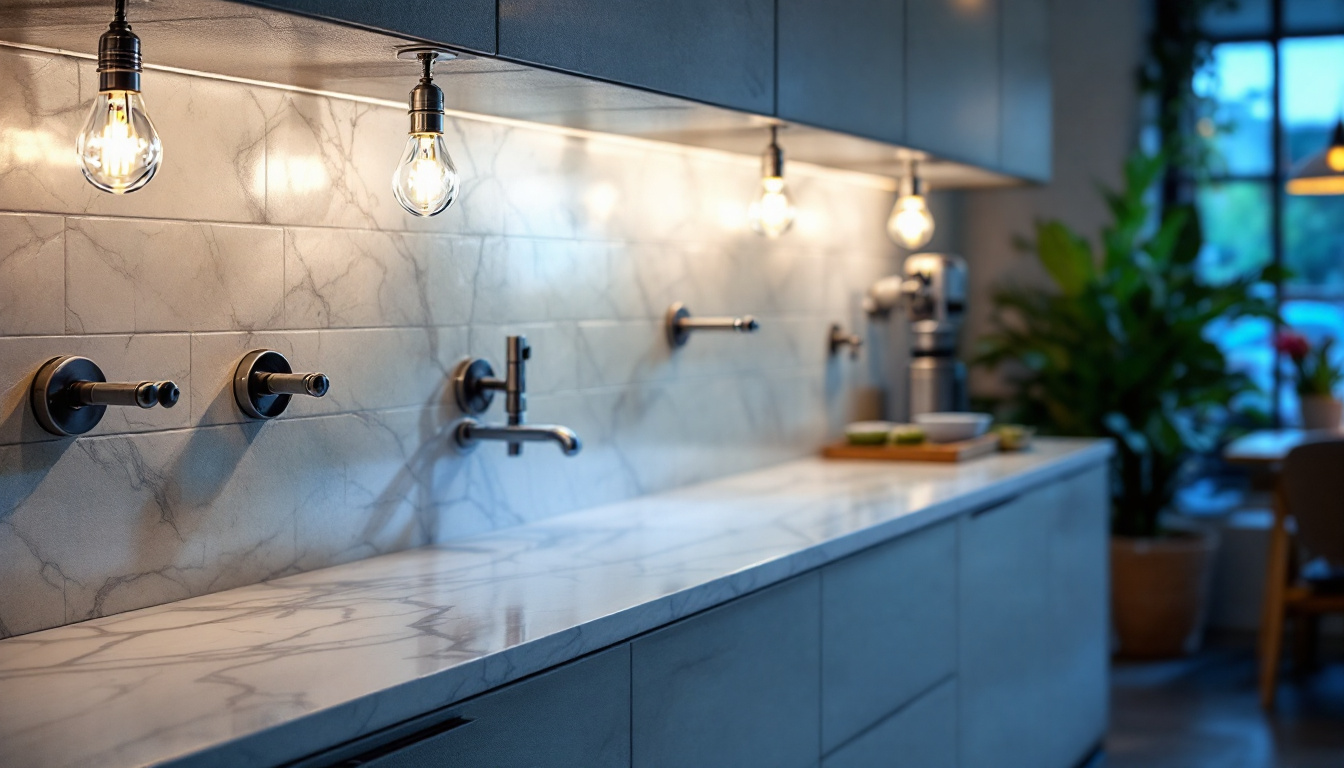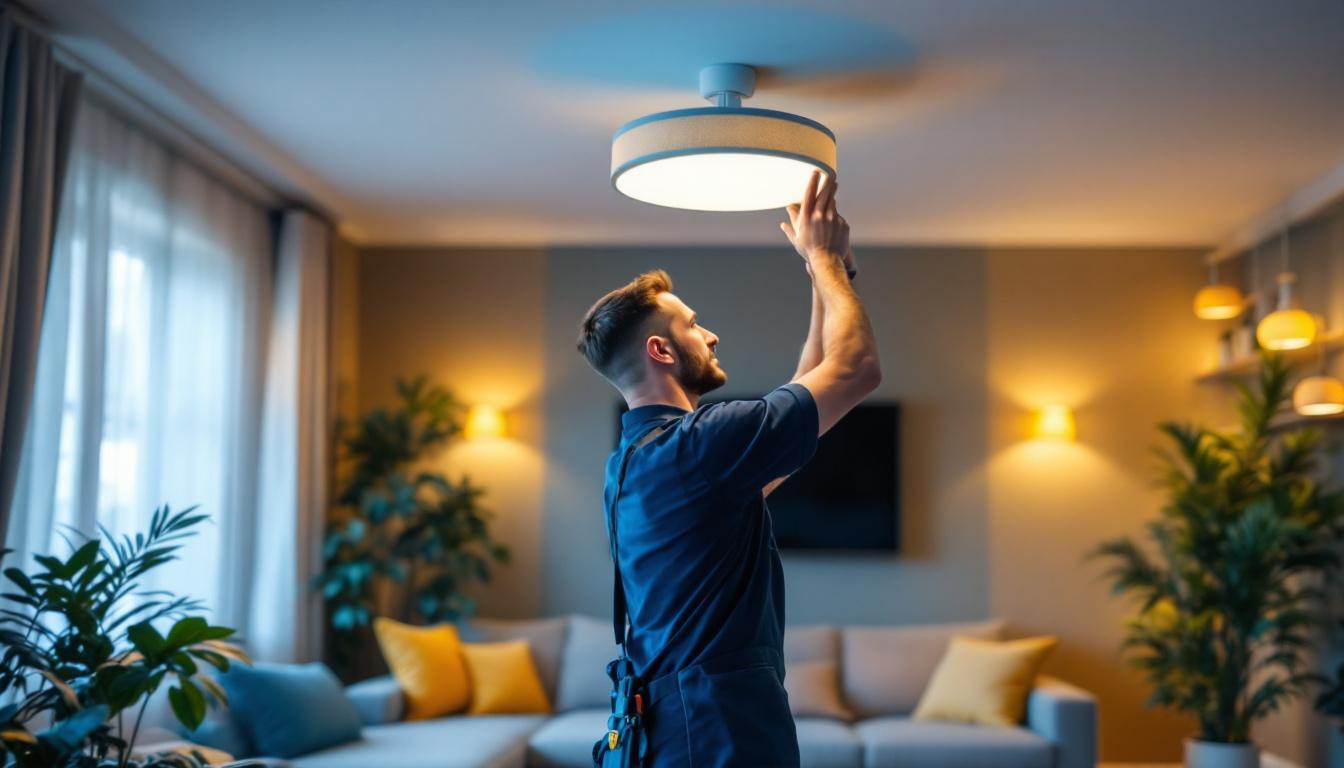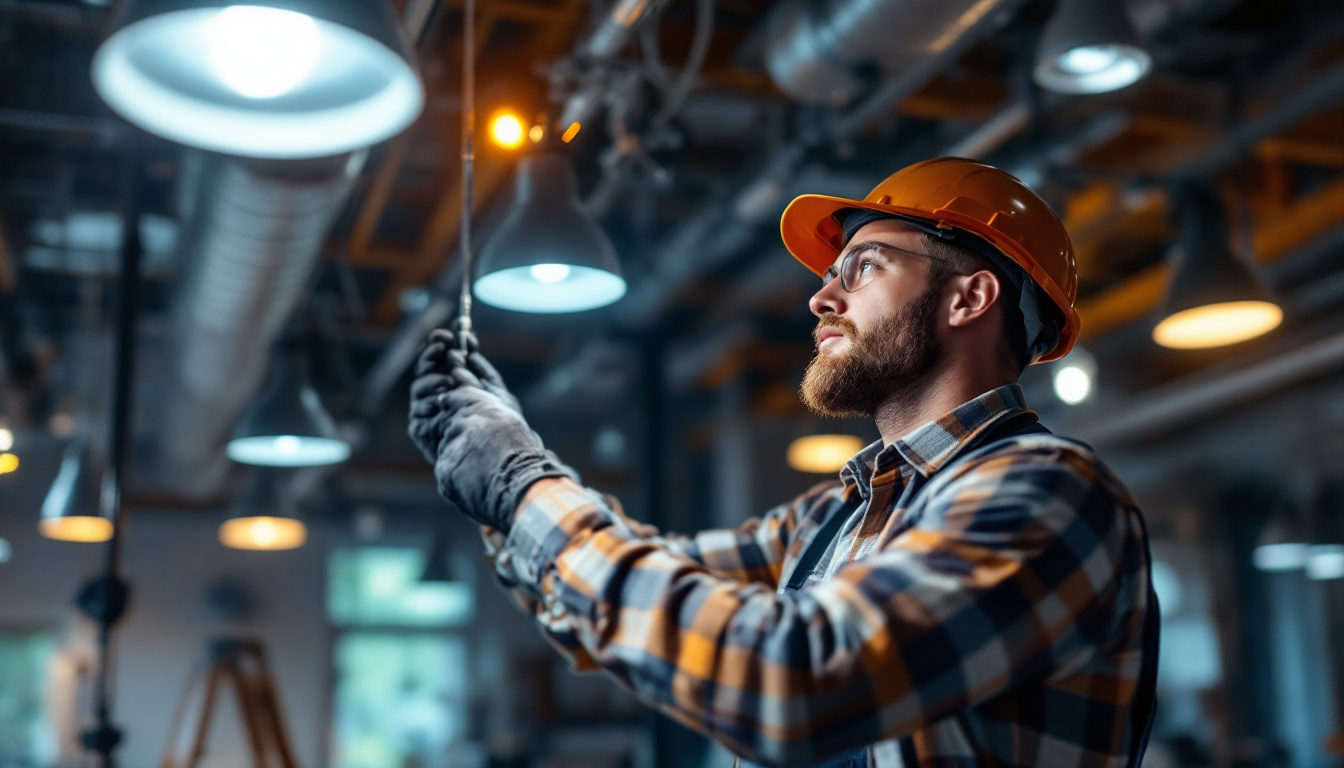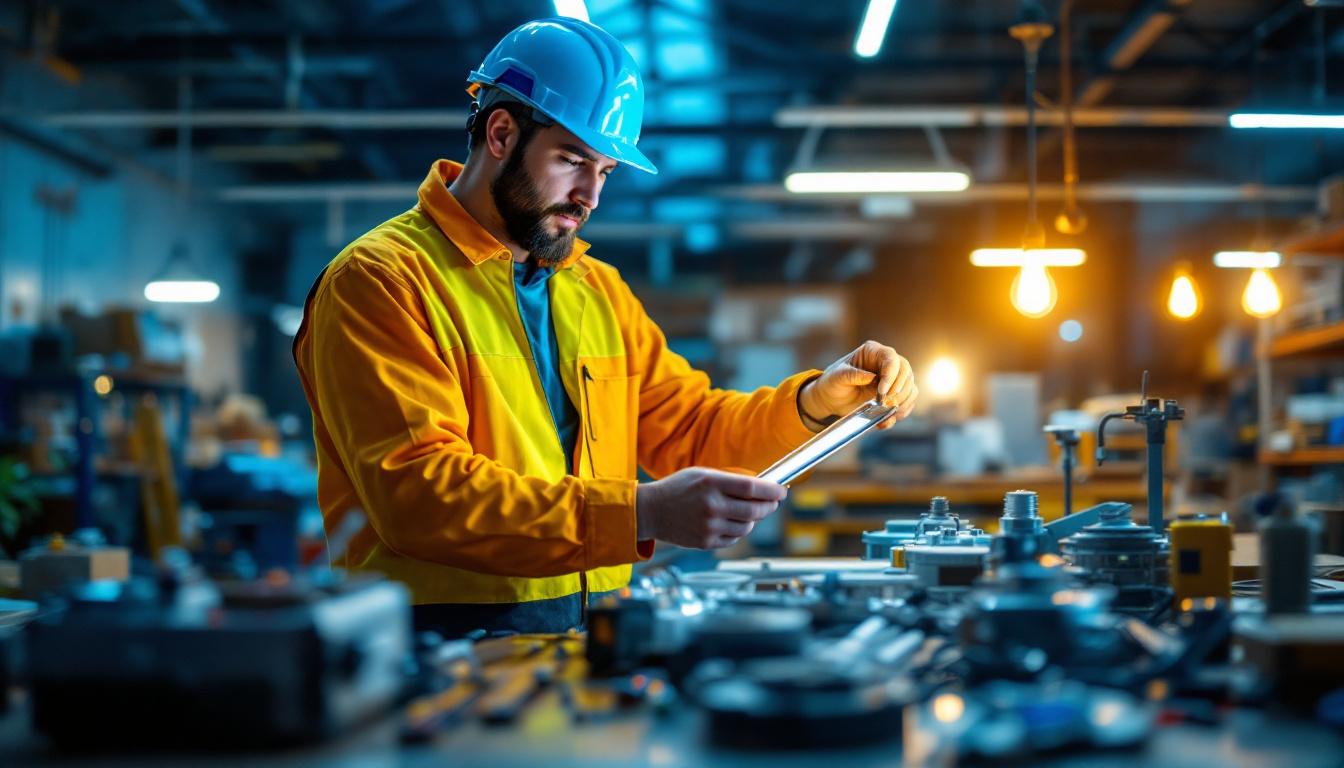
When it comes to lighting design, especially in specialized environments like coolers, the choice of bulbs is often overlooked. Lighting fixtures in a cooler must have bulbs that are not only functional but also efficient and durable. This article explores the critical aspects of selecting the right bulbs for cooler lighting fixtures, ensuring that contractors can deliver optimal results in their projects.
Lighting in coolers is essential for a variety of reasons, ranging from safety to product visibility. In environments where temperature control is crucial, such as supermarkets, warehouses, and restaurants, the right lighting can significantly impact both operational efficiency and customer experience.
Inadequate lighting can lead to safety hazards, such as slips and falls, and can also affect the quality of the products stored within the cooler. Therefore, selecting the appropriate lighting fixtures and bulbs is not just a matter of aesthetics; it is a fundamental aspect of maintaining a safe and efficient working environment.
Visibility is paramount in cooler environments. Proper lighting ensures that employees can easily see and access products without straining their eyes or risking accidents. Bright, evenly distributed light helps in identifying items quickly, reducing the time spent searching for products, which is essential in a fast-paced work environment.
Moreover, safety is enhanced when areas are well-lit. Poor lighting can obscure hazards, leading to potential accidents. By using the correct bulbs in cooler fixtures, contractors can help create a safer workspace, ultimately benefiting both employees and customers. Furthermore, the strategic placement of lighting fixtures can illuminate walkways and high-traffic areas, further reducing the risk of accidents and ensuring that employees can navigate the cooler space with confidence.
In many cases, the quality of the products stored in coolers can be affected by the type of lighting used. Certain bulbs emit heat, which can alter the temperature of the cooler and potentially spoil perishable goods. Therefore, selecting energy-efficient, cooler-running bulbs is crucial for maintaining product integrity.
Additionally, the color temperature of the bulbs can influence how products appear. For example, a cooler light can make fresh produce look more appealing, while warm light may enhance the appearance of baked goods. Understanding these nuances can help contractors choose the right bulbs for their specific applications. Beyond aesthetics, the right lighting can also help in detecting product freshness; for instance, vibrant colors under proper lighting can signal to employees when items need to be rotated or removed, thus minimizing waste and ensuring that customers receive only the best quality products.
Furthermore, advancements in LED technology have revolutionized the way coolers are lit. LED lights not only consume less energy but also have a longer lifespan compared to traditional lighting options. This means less frequent replacements and lower maintenance costs, making them a smart choice for businesses looking to optimize their cooler environments. The ability to dim or adjust the intensity of LED lighting also allows for greater flexibility in creating the ideal ambiance for different types of products, ensuring that everything from dairy to deli meats is showcased in the best possible light.
When it comes to selecting bulbs for cooler lighting fixtures, several options are available, each with its own advantages and disadvantages. Understanding these types can help contractors make informed decisions that align with their project requirements.
LED bulbs are among the most popular choices for cooler lighting due to their energy efficiency and longevity. They consume significantly less energy than traditional incandescent or fluorescent bulbs, resulting in lower utility costs. Additionally, LED bulbs have a longer lifespan, reducing the frequency of replacements.
Another advantage of LED bulbs is their ability to emit very little heat, which is crucial in cooler environments. This characteristic helps maintain the desired temperature within the cooler, ensuring that products remain fresh.
Fluorescent bulbs have been a staple in commercial lighting for years. They provide bright, even illumination and are relatively energy-efficient. However, they can have a shorter lifespan compared to LEDs and may not be as effective in maintaining cooler temperatures.
While fluorescent bulbs are a viable option, it’s essential to consider the specific needs of the cooler environment. For instance, if the cooler is frequently accessed, the potential for bulb breakage should be taken into account, as fluorescent bulbs can be more fragile than their LED counterparts.
Although incandescent bulbs are less common in cooler applications due to their high energy consumption and heat output, they may still be suitable for specific situations. They provide warm light that can enhance the appearance of certain products, making them appealing to customers.
However, their inefficiency and shorter lifespan make them less desirable for most cooler applications. Contractors should weigh the benefits against the drawbacks before opting for incandescent bulbs in cooler lighting projects.
Choosing the right bulbs for cooler lighting fixtures involves several critical considerations. By taking these factors into account, contractors can ensure that their lighting solutions are both effective and efficient.
Energy efficiency is one of the most significant factors to consider when selecting bulbs for cooler lighting. energy-efficient bulbs, such as LEDs, can drastically reduce energy consumption, leading to significant cost savings over time. This is particularly important in commercial settings where lighting can account for a substantial portion of energy expenses.
Contractors should look for bulbs with high lumens per watt (LPW) ratings, as this indicates better energy efficiency. Additionally, considering the total wattage of the lighting system can help in designing a more energy-efficient solution.
The color temperature of the bulbs can greatly influence the ambiance and functionality of the cooler environment. Measured in Kelvin (K), color temperature affects how products are perceived by customers. For example, a cooler color temperature (above 4000K) can enhance the appearance of fresh produce, while a warmer color temperature (below 3000K) may be more suitable for baked goods.
Contractors should consider the types of products stored in the cooler and how they will be displayed when selecting the appropriate color temperature. This attention to detail can enhance the overall shopping experience and potentially boost sales.
Durability is another crucial consideration when selecting bulbs for cooler lighting. The cooler environment can be harsh on lighting fixtures, with temperature fluctuations and potential moisture exposure. Therefore, choosing bulbs that are designed to withstand these conditions is essential.
LED bulbs typically offer superior durability compared to other types, as they are less prone to breakage and can operate effectively in colder temperatures. Contractors should also consider the lifespan of the bulbs, as longer-lasting options can reduce maintenance costs and downtime.
Proper installation of cooler lighting fixtures is vital to achieving optimal performance. Contractors must pay attention to several factors to ensure that the lighting system functions effectively and safely.
The placement of lighting fixtures within the cooler can significantly impact the overall effectiveness of the lighting system. Fixtures should be strategically positioned to provide even illumination throughout the space, minimizing shadows and dark spots.
Contractors should consider the layout of the cooler, including the location of shelves and products, when determining fixture placement. Properly positioned fixtures can enhance visibility and improve the overall shopping experience for customers.
Electrical considerations are crucial when installing lighting fixtures in coolers. Contractors must ensure that the wiring is suitable for the cooler environment, taking into account factors such as temperature fluctuations and potential moisture exposure.
Using weatherproof or moisture-resistant fixtures and wiring can help prevent electrical issues and ensure the safety of the lighting system. Additionally, contractors should adhere to local electrical codes and regulations to guarantee compliance and safety.
Maintaining cooler lighting systems is essential for ensuring their longevity and effectiveness. Regular maintenance can help identify potential issues before they become significant problems, ultimately saving time and costs.
Conducting regular inspections of the lighting fixtures and bulbs is crucial for identifying any signs of wear or damage. Contractors should check for flickering bulbs, burnt-out lights, or any signs of moisture accumulation around fixtures.
By addressing these issues promptly, contractors can prevent more extensive problems and ensure that the cooler remains well-lit and safe for employees and customers alike.
Cleaning the fixtures and bulbs regularly can help maintain optimal lighting performance. Dust and grime can accumulate on fixtures, reducing their brightness and effectiveness. Contractors should develop a cleaning schedule to ensure that all components are kept clean and functioning correctly.
Additionally, replacing burnt-out bulbs promptly is crucial for maintaining consistent lighting levels. Keeping a stock of replacement bulbs on hand can streamline this process and minimize downtime.
In conclusion, the selection of bulbs for cooler lighting fixtures is a critical aspect of lighting design that should not be overlooked. By understanding the importance of proper lighting, the types of bulbs available, and the key considerations for selection and installation, contractors can ensure that their projects are successful.
Ultimately, the right bulbs can enhance visibility, improve safety, and maintain product quality in cooler environments. By prioritizing energy efficiency, color temperature, and durability, contractors can deliver lighting solutions that meet the needs of their clients while also contributing to a more sustainable future.
As the industry continues to evolve, staying informed about the latest advancements in lighting technology will be essential for contractors looking to remain competitive. By embracing innovation and prioritizing quality, contractors can ensure that their lighting projects are not only functional but also exceptional.
Ready to elevate your cooler lighting projects with bulbs that promise efficiency, longevity, and superior performance? Look no further than LumenWholesale. Our extensive selection of spec-grade lighting products is designed to meet the highest industry standards, ensuring you deliver exceptional results every time. Say goodbye to local distributor markups and hello to unbeatable wholesale prices, free shipping, and the convenience of bulk buying. Make the smart choice for your lighting needs and experience wholesale lighting at the best value today. Your projects deserve the best — and with LumenWholesale, that’s exactly what you’ll get.

Discover how lighting contractors can enhance their business by tapping into the growing market of discount ceiling lights.

Discover the insider tips and expert strategies that lighting contractors use to transform spaces with precision and creativity.

Discover the top lighting solutions for garages that can elevate your contracting business.

Discover everything about lights ballast in just 5 minutes—learn how it improves lighting efficiency, reduces costs, and boosts contractor expertise. Read now!.